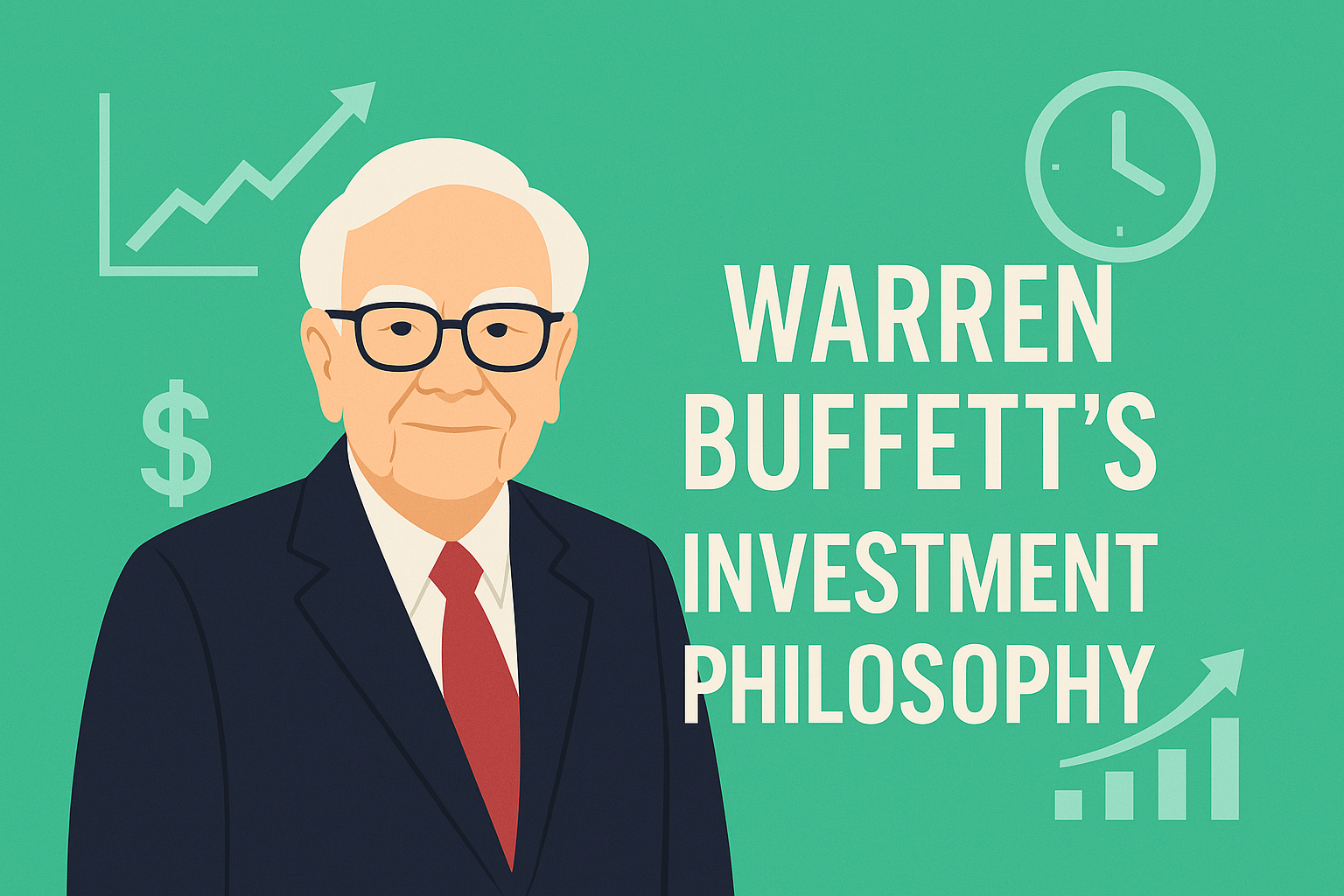— The Wealthy Mindset Behind Long-Term Value Investing —
How Warren Buffett Thinks: A Guide to the Mindset of Wealth-Building
Introduction
Warren Buffett is not just one of the richest individuals in the world—he is widely regarded as the wisest investor of our time. His success is not built on luck or short-term speculation, but on a disciplined, philosophical approach to investing that prioritizes intrinsic value, long-term thinking, and ethical conduct.
This report outlines the core principles of Buffett’s investment philosophy and explores how high-net-worth individuals can incorporate these insights into their own strategies.
- 1. Price Is What You Pay, Value Is What You Get
- 2. Time Is Your Greatest Ally – Harnessing Compounding
- 3. Know Your Circle of Competence – Only Invest in What You Understand
- 4. Emotional Discipline – Don’t Follow Mr. Market
- 5. Reputation and Ethics – The Ultimate Asset
- Summary Table: Five Buffett Principles for the Wealthy
1. Price Is What You Pay, Value Is What You Get
Buffett’s investment decisions are rooted in the concept of intrinsic value—the present value of all expected future cash flows a business will generate.
“Price is what you pay. Value is what you get.”
He does not buy stocks; he buys businesses. And only when their market price is significantly below their true value.
This principle separates Buffett from speculators—he is a value investor, not a price chaser.
2. Time Is Your Greatest Ally – Harnessing Compounding
Buffett is a master of long-term investing. He famously said:
“If you aren’t willing to own a stock for ten years, don’t even think about owning it for ten minutes.”
Through holding high-quality businesses for decades, he allows compound interest to work its magic, exponentially increasing his returns with time.
For the wealthy, starting early and staying consistent is more powerful than chasing short-term gains.
3. Know Your Circle of Competence – Only Invest in What You Understand
Buffett doesn’t take blind risks. His principle is simple:
“Risk comes from not knowing what you’re doing.”
He stays within his circle of competence—only investing in businesses and industries he deeply understands.
For high-net-worth individuals, this means concentrating capital where informational or operational edges exist, rather than over-diversifying into the unknown.
4. Emotional Discipline – Don’t Follow Mr. Market
Buffett anthropomorphizes the stock market as “Mr. Market,” an emotional creature who swings from irrational exuberance to despair.
The smart investor doesn’t follow Mr. Market’s mood swings but takes advantage of them.
“Be fearful when others are greedy, and greedy when others are fearful.”
For wealthy investors, resisting media noise and making calm, rational decisions is often what separates lasting wealth from fleeting gains.
5. Reputation and Ethics – The Ultimate Asset
Buffett’s success is inseparable from his ethical stance:
“It takes 20 years to build a reputation and five minutes to ruin it.”
He only invests in companies he trusts—with honest management and ethical operations.
For the affluent, wealth and reputation go hand in hand. A well-governed investment is not only financially rewarding but socially and personally sustainable.
Summary Table: Five Buffett Principles for the Wealthy
| Principle | Meaning | Lesson for High-Net-Worth Individuals |
|---|---|---|
| 🧠 Value Over Price | Focus on intrinsic value, not market hype | Analyze businesses, not tickers |
| ⏳ Long-Term Vision | Let compounding work over decades | Stay invested, ignore volatility |
| 🎯 Know What You Own | Invest only in understandable businesses | Build expertise in select areas |
| 💼 Emotional Control | Market swings are opportunities | Discipline outperforms reaction |
| 🏛️ Integrity Matters | Trustworthy companies win long-term | Align investments with values |
Conclusion
Warren Buffett’s investment philosophy is not a technical method, but a mental model—a way of thinking about money, time, and life.
In a noisy, fast-paced world, Buffett teaches us that true wealth is built quietly, patiently, and ethically.
If you aspire to grow and preserve wealth like Buffett, start not with what to buy, but with how to think.


